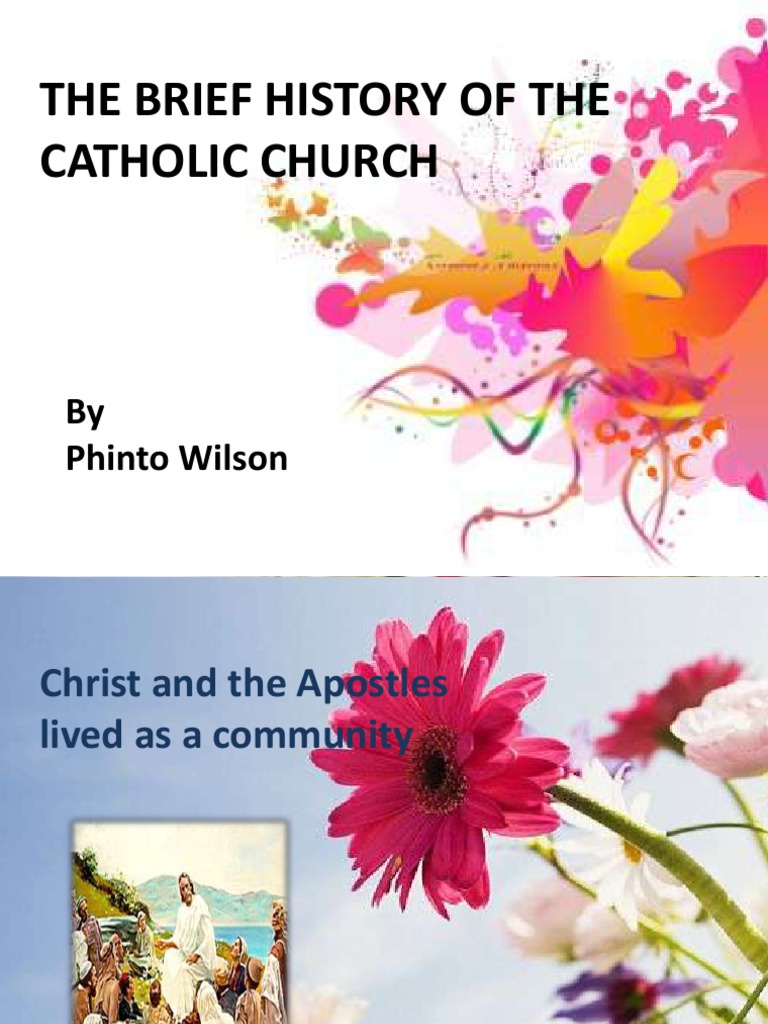The inception of the Catholic Church is a complex narrative woven with historical, theological, and apostolic threads. It is widely accepted that the Church was founded in the 1st century AD, with its roots traced back to Jesus Christ and His teachings. Jesus, a Jewish preacher, began His ministry around 27-30 AD, and it is through His prophecies and actions that the foundation of what would become the Catholic Church was laid.
At the heart of the Catholic faith lies the understanding that Jesus appointed the Apostle Peter as the leader of His followers. According to the New Testament, specifically in the Gospel of Matthew (16:18-19), Jesus promised Peter, “You are Peter, and on this rock I will build my Church.” This passage signifies the pivotal role Peter would play in the early Church’s establishment and governance. It is from this declaration that the concept of apostolic succession and the primacy of the papacy originated.
After Jesus’ crucifixion and resurrection, the apostles were commissioned to spread His teachings. This phenomenon is often referred to as the Great Commission, documented in Matthew 28:19-20, wherein Jesus instructed His disciples to “make disciples of all nations.” With this imperative, the early followers of Christ began to establish communities of believers, thus laying the groundwork for what would eventually evolve into the Church.
However, the establishment of an organized institution was not instantaneous. It is essential to grasp that the Catholic Church as an ecclesiastical entity grew organically through a series of events and theological developments. Initially, the early Christians perceived themselves as a reform movement within Judaism, honoring the traditions of their ancestry while acknowledging the New Covenant that Jesus’ ministry represented.
As the apostles dispersed, particularly Paul of Tarsus, who converted from a zealous persecutor of Christians to a significant proponent of Christ’s teachings, the spread of Christianity expanded beyond Jewish communities. Paul’s letters, which comprise a significant portion of the New Testament, were instrumental in articulating and disseminating Christian doctrine and practice. His theological contributions further delineated the beliefs and governance structures essential for the burgeoning Christian communities.
A significant turning point occurred in 313 AD with the Edict of Milan, initiated by Emperor Constantine, which granted religious tolerance to Christians within the Roman Empire. This legislation represented a paradigm shift, enabling the Christian faith to flourish publicly and unimpeded. Consequently, the once-persecuted Church began to institute formal structures, defining canon law, ecclesiastical hierarchy, and the role of bishops.
By the end of the 4th century, with the establishment of Nicene Christianity as the state religion under Emperor Theodosius I, the Catholic Church had solidified its position within the societal and political fabric of the Roman Empire. The Council of Nicaea in 325 AD, convened by Constantine, affirmed critical doctrines, including the nature of Christ and the Trinity. Such councils were pivotal in addressing heresies and establishing a unified set of beliefs that would endure through the centuries. This consolidation of doctrine provided the Church with theological authority and a foundation of shared beliefs among believers.
Furthermore, the concept of apostolic succession became a linchpin of Catholic identity. The Church maintains that its bishops are the spiritual successors of the apostles, ordained through an unbroken line that traces back to Peter and the early Church leaders. This continuity lends credibility to the Church’s teachings and sacraments, as they are believed to be grounded in the authority bestowed by Christ Himself.
Readers may encounter various perspectives on the origins of the Catholic Church. Some may examine it through the lens of ecclesiastical history, exploring the synods and councils that shaped Catholic doctrine. Others might approach the topic from a theological standpoint, dissecting the implications of apostolic succession and its impact on Church governance. Additionally, those interested in more sociocultural aspects may study the relationship between the Church and its surrounding societies throughout history, scrutinizing how different contexts influenced its teachings, practices, and interactions with political entities.
Ultimately, the foundational story of the Catholic Church is marked by both divine ordination and historical circumstance. The belief that Christ Himself instituted the Church underscores its importance within the Christian faith, offering a sense of security and continuity for believers. This conviction serves as a reminder of the transcendent purpose of the Church as a vessel for evangelism, sacramental life, and a community of faith dedicated to following the teachings of Jesus Christ.
In summary, the Catholic Church was founded by Jesus Christ and solidified through the apostolic ministry of His disciples, with Peter recognized as its first leader. Over centuries, this humble beginning transformed into a robust institution characterized by deeply rooted traditions, theological advancements, and a commitment to preserving the teachings of Christ. The Church’s origins reflect a dynamic interplay of faith, authority, and historical context, inviting exploration and contemplation for both believers and scholars alike.



